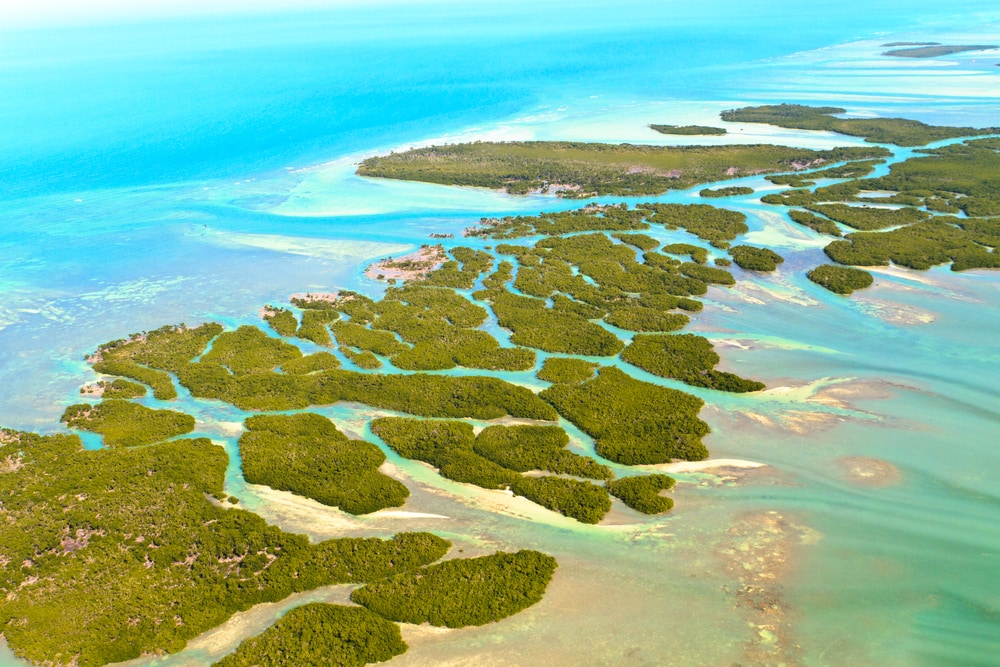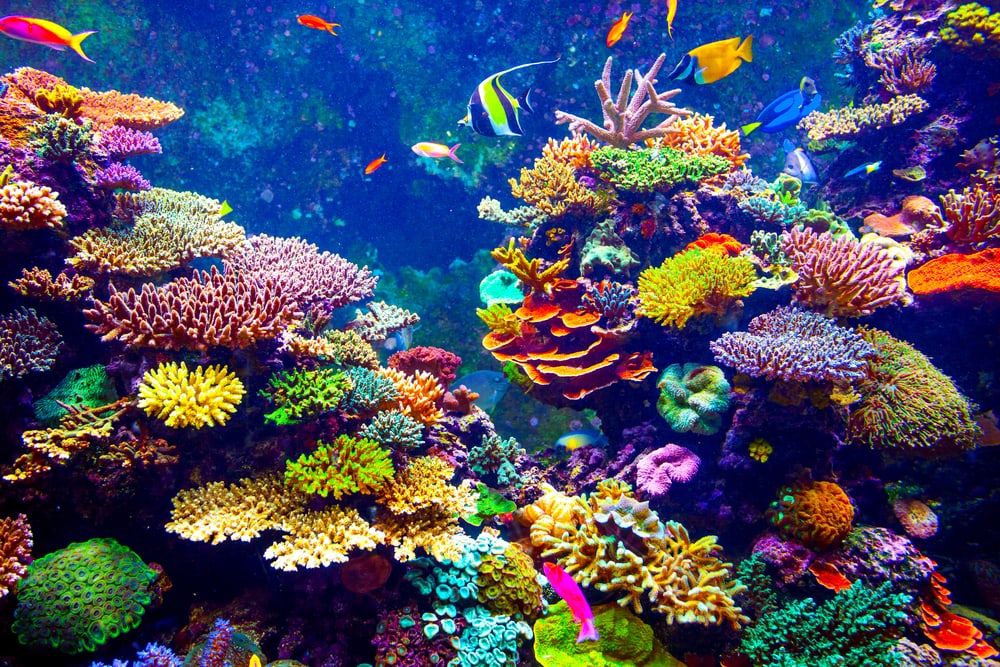Florida Coral reefs are among the most captivating natural wonders on our planet. They cover 0.1% of the ocean floor but account for a significantly larger percentage of ocean biodiversity. These underwater structures exist off the shores of over a hundred countries, the vast majority of which are developing nations.
What are Coral Reefs?
When many people think of the term “reef” they picture jagged rocky structures below the ocean’s surface. However, coral reefs aren’t made up of rocks, or at least not rocks in the geological sense. These structures are composed of skeletons from ocean coral, which were once living in those areas.
Living coral exists as a network of creatures known as “coral polyps”. These organisms cluster together on previously dead coral and secrete calcium carbonate or limestone on the surface below. Over time, these expand and grow, with other living coral residing on their surface.
What is the Importance of Protecting Coral Reefs?
Reefs such as the Florida Coral Reefs are home to numerous species of aquatic life that cannot survive in other parts of the ocean. The crevasses and interstitial spaces in the structures of these reefs offer a safe hiding spot for small fishes, crustaceans, worms, and numerous other aquatic species.
These reefs also provide a source of food for many humans that live by the coast in certain countries. Some of these coral reefs and animals that reside in them contain chemicals that can be used to create important medicines for combating diseases such as arthritis, cancer, viral infections, and heart disease.
However, the importance of some coral reefs such as the Florida Coral Reefs extends far beyond just creating medicines. The species living in these structures are an important component in many food chains. If a coral reef dies and becomes uninhabitable, the abundance of these fish will decrease, which could threaten the lives of the other species that rely on them for food.
How do Temperature Changes Impact Coral Reefs?
Despite their hard exoskeletons, coral reefs are sensitive organisms that are affected by water temperature, pH, and disease. It is believed that a water temperature increase of only 2°C can lead to an issue known as coral bleaching.
When this occurs, corals drive out the symbiotic algae residing within their structures. These special algae are what give coral reefs their brilliant colors. Once they have left the structure, the coral begins to turn white.
This coral “bleaching” may not be dangerous to these organisms initially, but sustained bleaching will cause coral to die and prevent new ones from forming in their place. These events are becoming more and more frequent due to global warming that is raising the average ocean temperatures in different regions around the world. However, it is believed that the Florida Coral Reefs are not threatened by temperature rises yet.

How Does Ocean Acidification Affect Coral Reefs?
Temperature changes aren’t the only thing threatening coral reefs. These aquatic creatures are also sensitive to minor changes in ocean water pH. So why should this be concerning?
In addition to causing ocean water temperatures to rise, climate change is also lowering their average pH. Increased greenhouse gas emissions have caused the concentration of carbon dioxide in the atmosphere to skyrocket.
This increase in atmospheric concentrations of carbon dioxide leads to more of the compound being absorbed by the ocean. CO2 reacts with seawater to form carbonic acid, which reduces the concentration of carbonate, and also lowers the pH of the surrounding water.
Coral relies on carbonate ions to construct their skeletons and grow. This ocean acidification may not be directly killing off these organisms, but it reduces their ability to recover from problems such as pollution, changes in ocean temperatures, and excessive sun exposure.
What is Killing off Florida Coral Reefs?
The aforementioned problems are not impacting Florida Coral Reefs yet. However, these special reefs are dying due to another issue: disease.
A condition known as stony coral tissue loss disease began affecting coral off the coast of Florida’s Miami-Dade county several years ago. The problem has since spread to other parts of the state and does not appear to be slowing down.
Experts have found that over 35% of the coral reefs in Florida waters have been lost due to this disease. This condition causes the reefs to turn white; however, this is different from coral bleaching. The white color researchers find on these dead reefs is due to their exoskeletons being bare and exposed.
Research has yet to narrow down the specific cause for this disease, but it is suspected that ocean pollution may play a key role in causing it.
How can Florida Coral Reefs be protected?
At this point in time there is no way to actually stop the disease from occuring. However, scientists have been treating affected coral with an antibiotic known as amoxicillin.
Reefs affected by this disease typically have a survival rate between 0% and 33%. With the help of this antibiotic treatment, the survival rate increases to 99%.
Applying amoxicillin paste to such a large surface area can be a long and painstaking process, but many scientists are committed to protecting Florida Coral Reefs. They usually tag the areas that have been treated using this paste and check back on them in the future. The results seem promising so far, but there is still plenty of work to be done.
What Lessons can be Learnt from Florida Coral Reefs?
Scientists fear that this disease may spring up in coral reefs around the globe. However, there may not be enough marine experts available to treat all these reefs, which makes the threat of this disease even more severe.
A percentage of Florida Coral Reefs may have survived this epidemic, but the battle is far from won. Until the primary cause of this disease is discovered and addressed, reefs will continue to contract this deadly disease.


